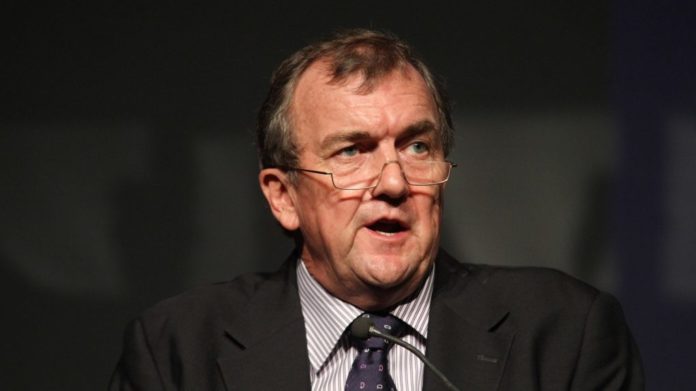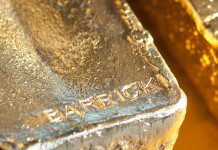
BARRICK Gold CEO Mark Bristow said chances were high the company would secure an agreement this year for the payment of nearly $1bn in profits earned at Kibali in which it has a 45% stake.
“It will definitely get paid this year. I was hoping for this week,” Bristow said in an interview following the publication of Barrick’s second quarter and interim numbers today. “I’ve been wrong enough on this,” he added.
Payment of the profits would also be good news for AngloGold Ashanti which shares Kibali with Barrick which is the operator. The outstanding 10% is owned by the Democratic Republic of Congo (DRC) government.
The outgoing CEO of AngloGold Ashanti, Christine Ramon, said last week her company was owed $485m in profits earned in more than 18 months of operation.
Bristow said the appointment of Malangu Kabedi-Mbuyi, a former official at the International Monetary Fund (IMF) as the DRC’s central bank governor in July was a key development in having the funds released.
Currently, a contradiction in DRC’s 2018 Mining Code – with clauses recognising the right of investors to pay dividends while another calls for the repatriation of 60% of funds – is blocking the payment of the profits. Whilst the code would ultimately have to be amended, the payout of profits only requires the signature of the governor, said Bristow.
“All we need is a clearance to have the foreign funds paid out of the country. We have met with the governor and she totally understands the situation,” he said.
Gold guidance 2021
Barrick maintained gold production guidance for its 2021 financial year despite producing five percent less gold in the second quarter compared to the first quarter. Year on year second quarter gold production was nine percent lower.
The gold miner also kept to its previously announced $750m capital return programme paying out a second $250m tranche in a special 14 cents per share dividend as well as a $0.09c/share dividend for the second quarter.
The reduction in gold output is owing to planned maintenance at Barrick’s Nevada Gold Mines and a mill failure at Carlin’s Goldstrike roaster.
Production for the year is guided to 4.4 to 4.7 million ounces at an all-in sustaining cost (AISC) of between $970 and $1,020/oz, assuming a gold price of about $1,700/oz. Set against this, second quarter production was 1.04 million at AISC of $1,087/oz, an increase of seven percent quarter on quarter.
Second quarter copper production was three percent higher at 96 million pounds (lbs) which was produced at an AISC of $2.74/lb, a year-on-year increase of 21% in the quarter.
Second quarter net earnings were 24% lower year on year at $411m which included an impairment on Lagunas Norte, a gold mine in Peru that Barrick has agreed to sell. Adjusting for its item, net earnings were 1% higher at $513m quarter on quarter.
On an interim basis, earnings totalled $949m compared to $757m, largely owing to the higher refined gold price of $1,820/oz for the period compared to $1,657/oz for the interim period in 2020. The realised price for copper was also higher at $4,32 per pound ($/lb) compared to $2.53/lb last year.
Adjusted net interim earnings of $1.02bn were $320m higher year-on-year. Barrick ended the period with cash of just over $5bn.










